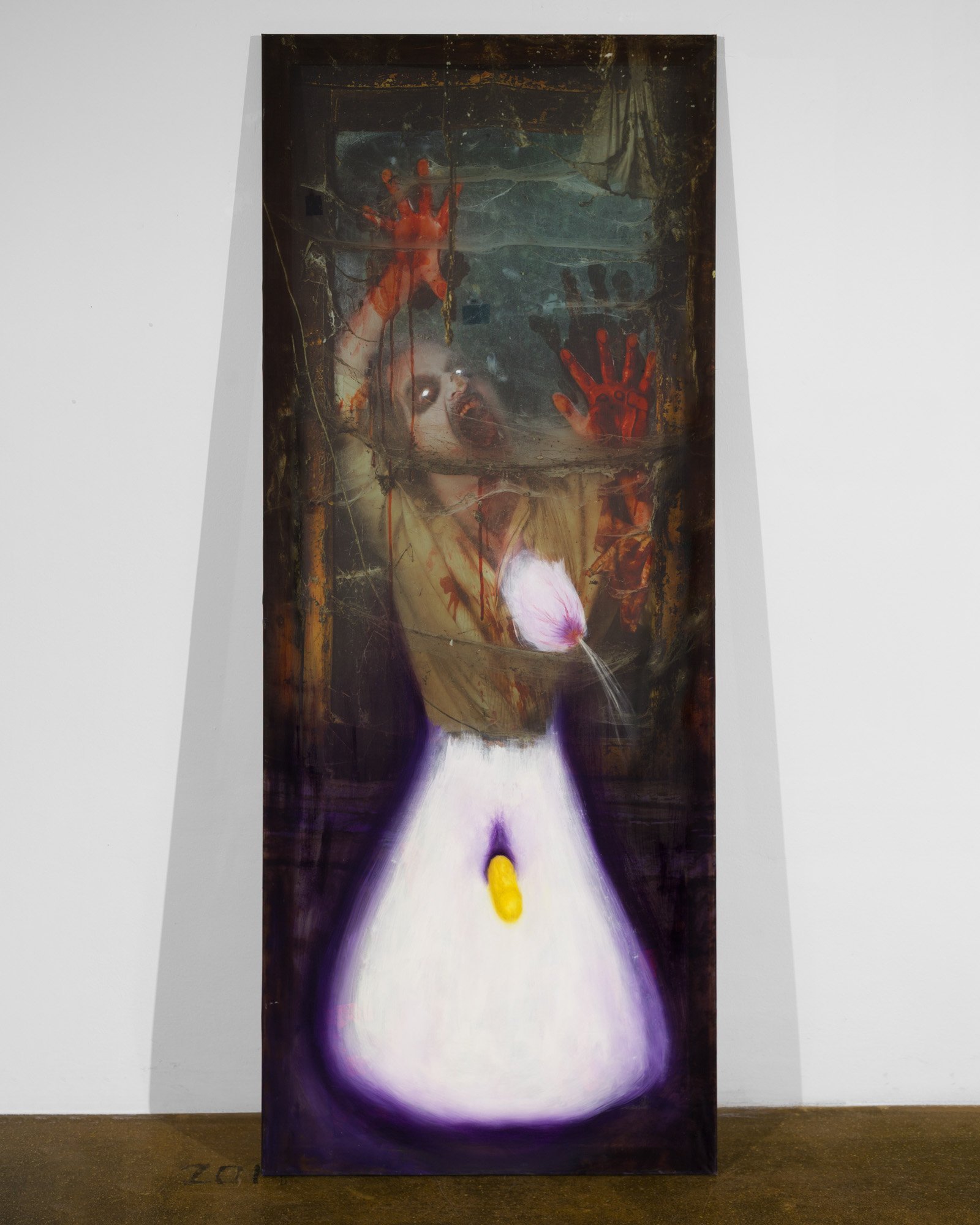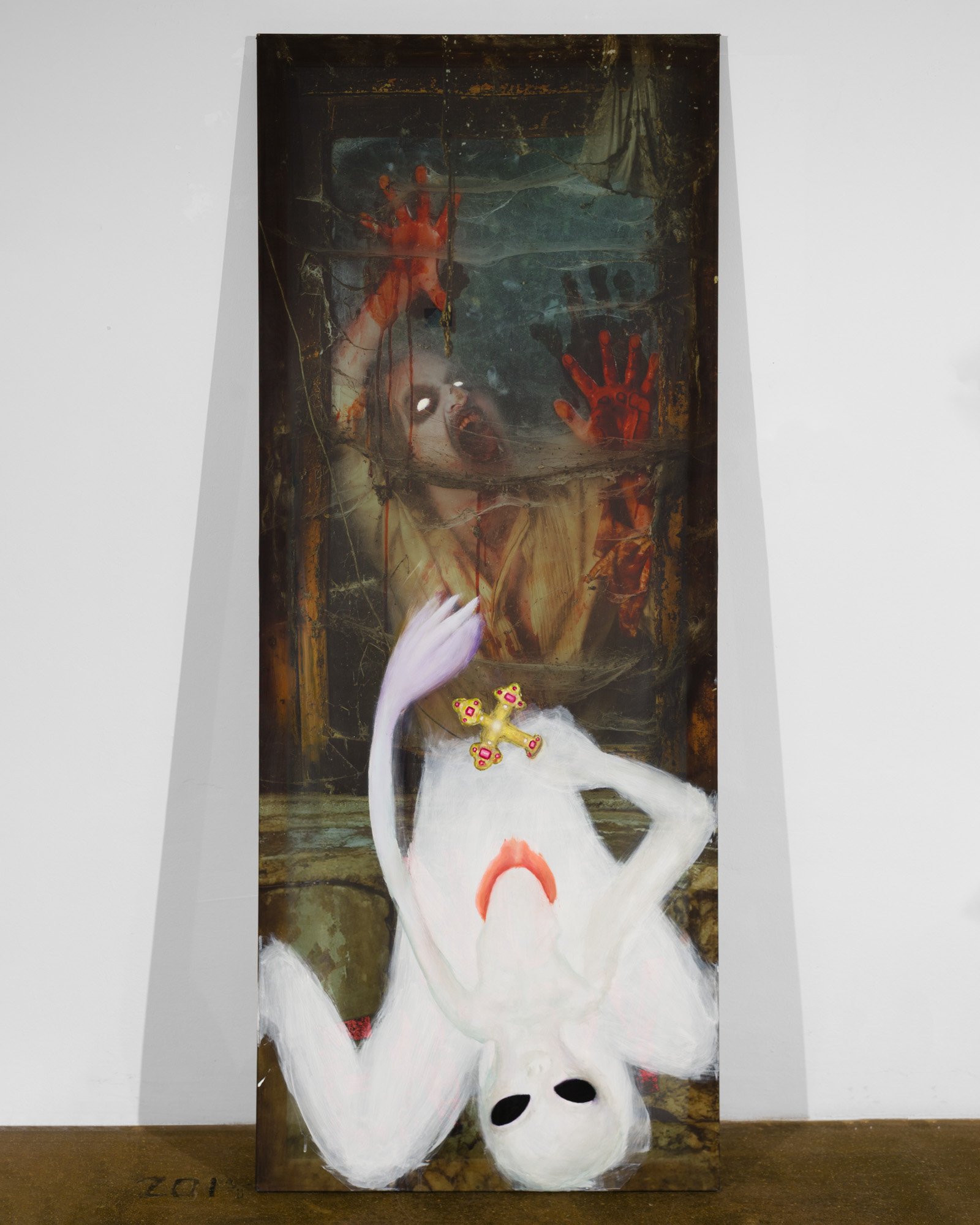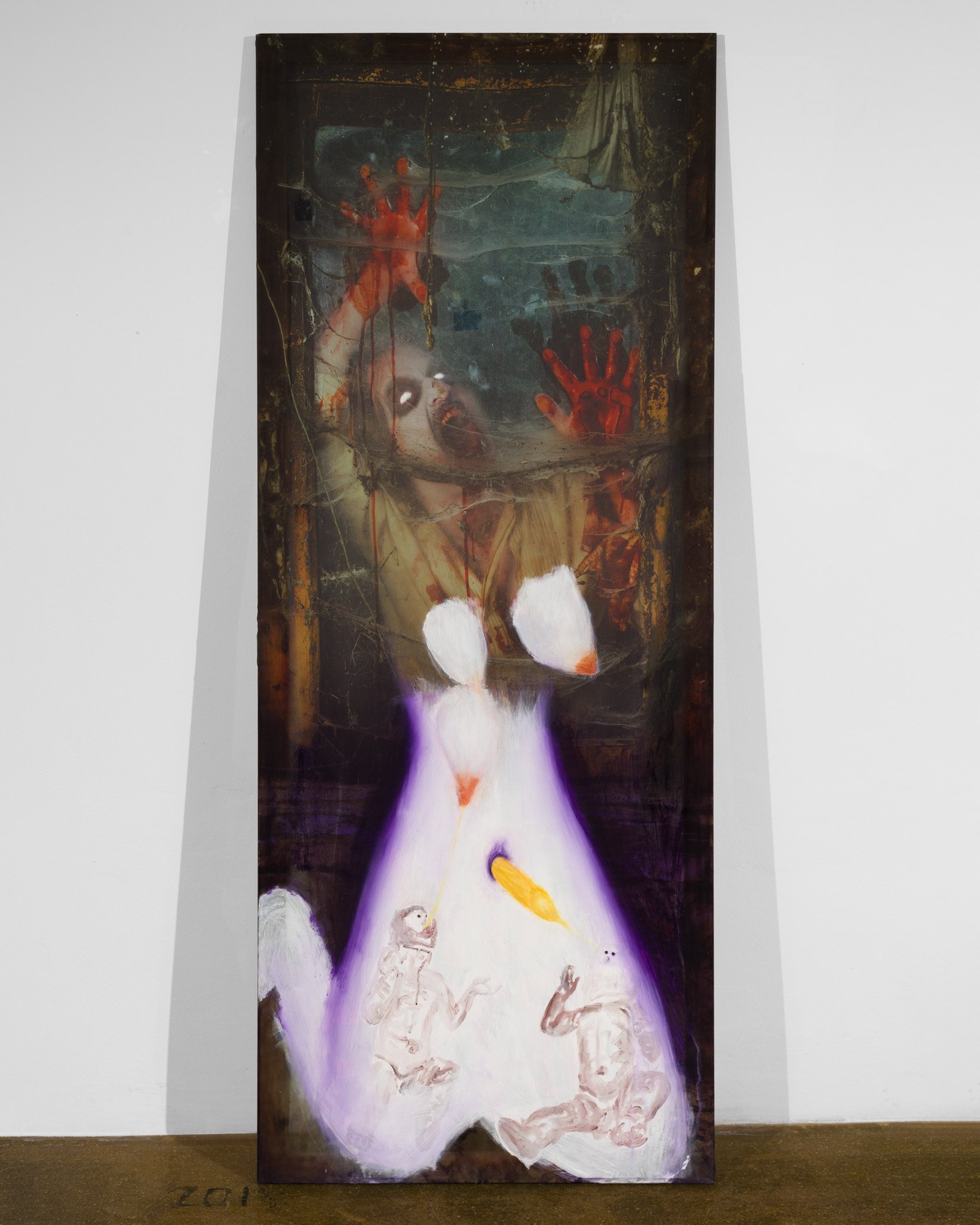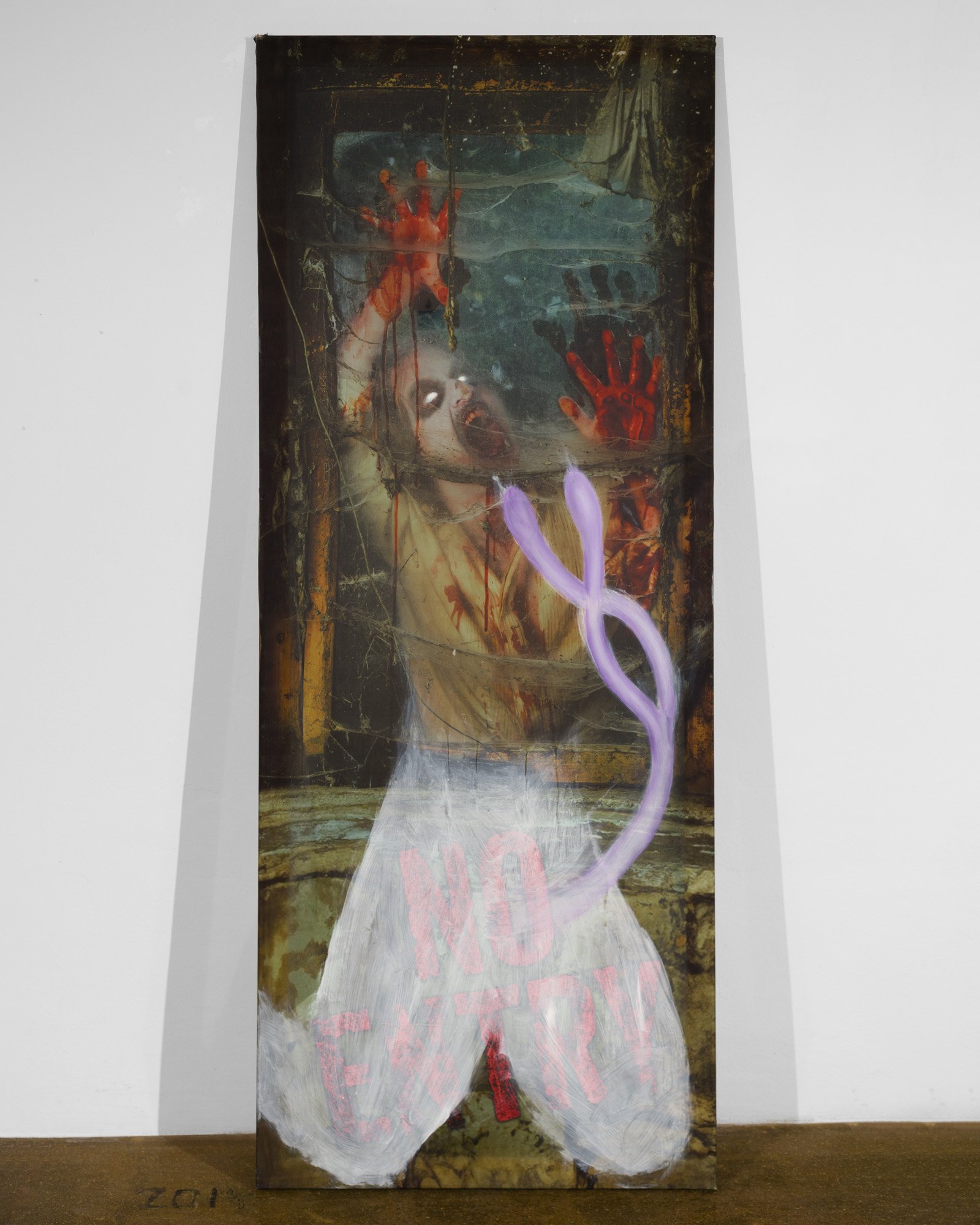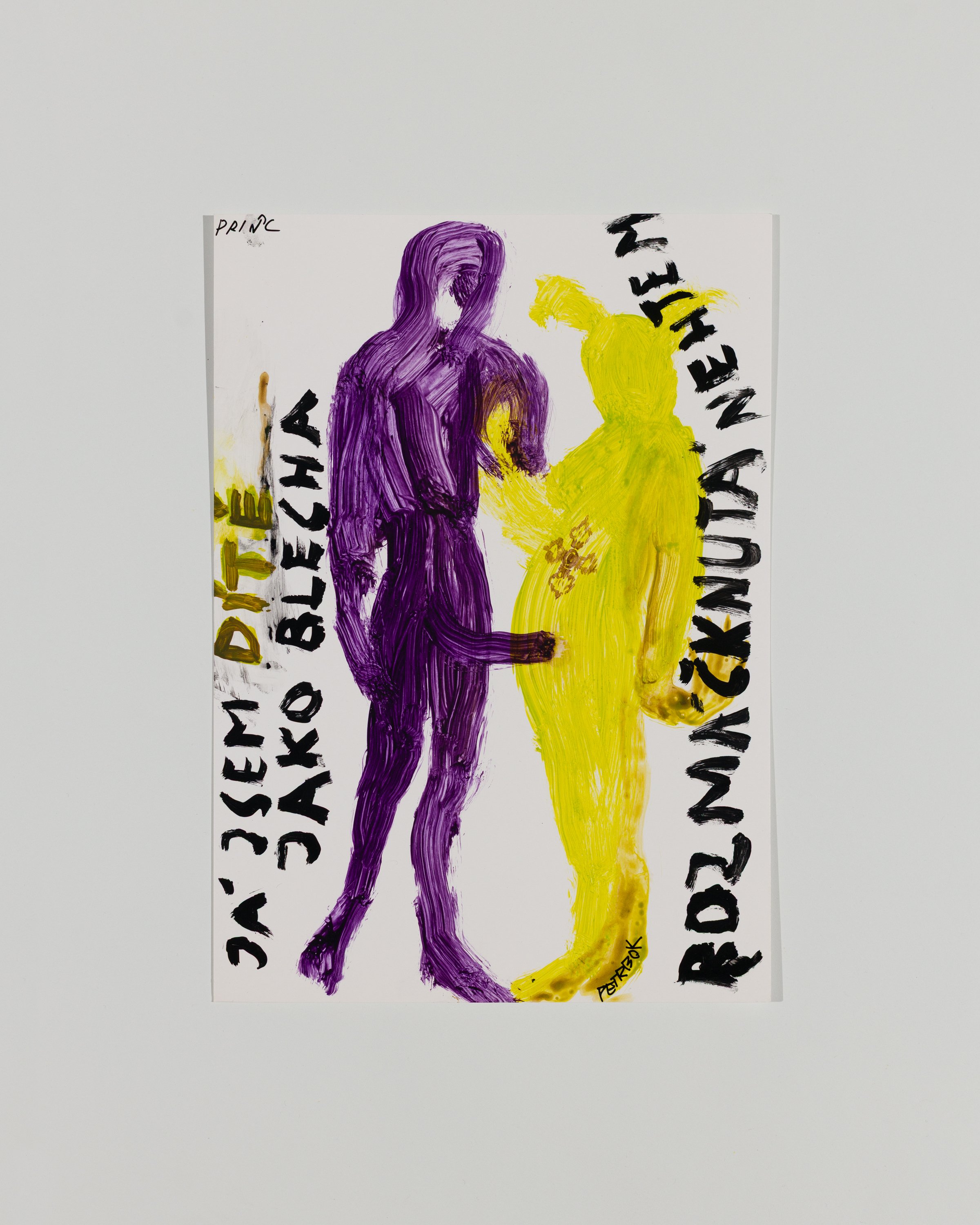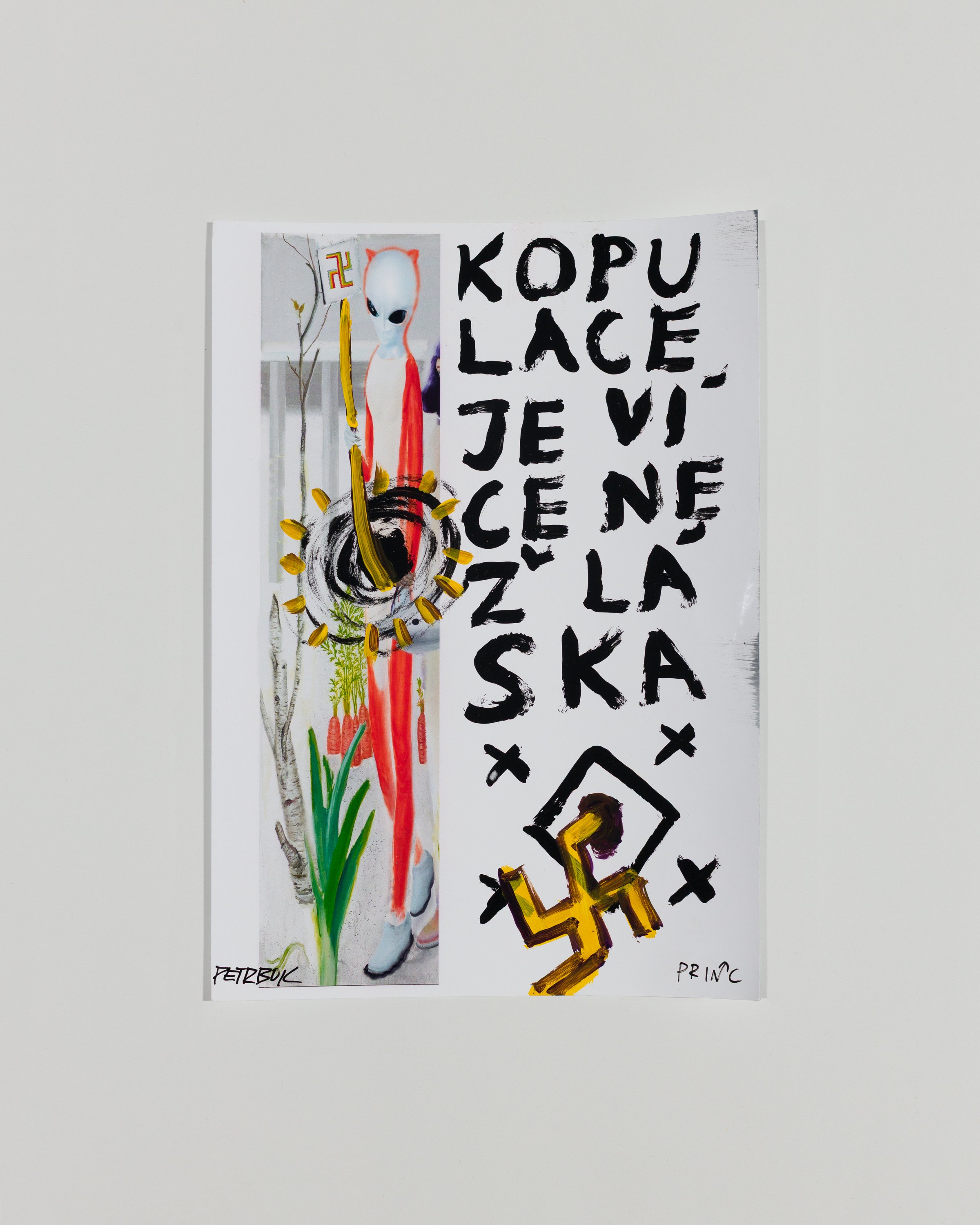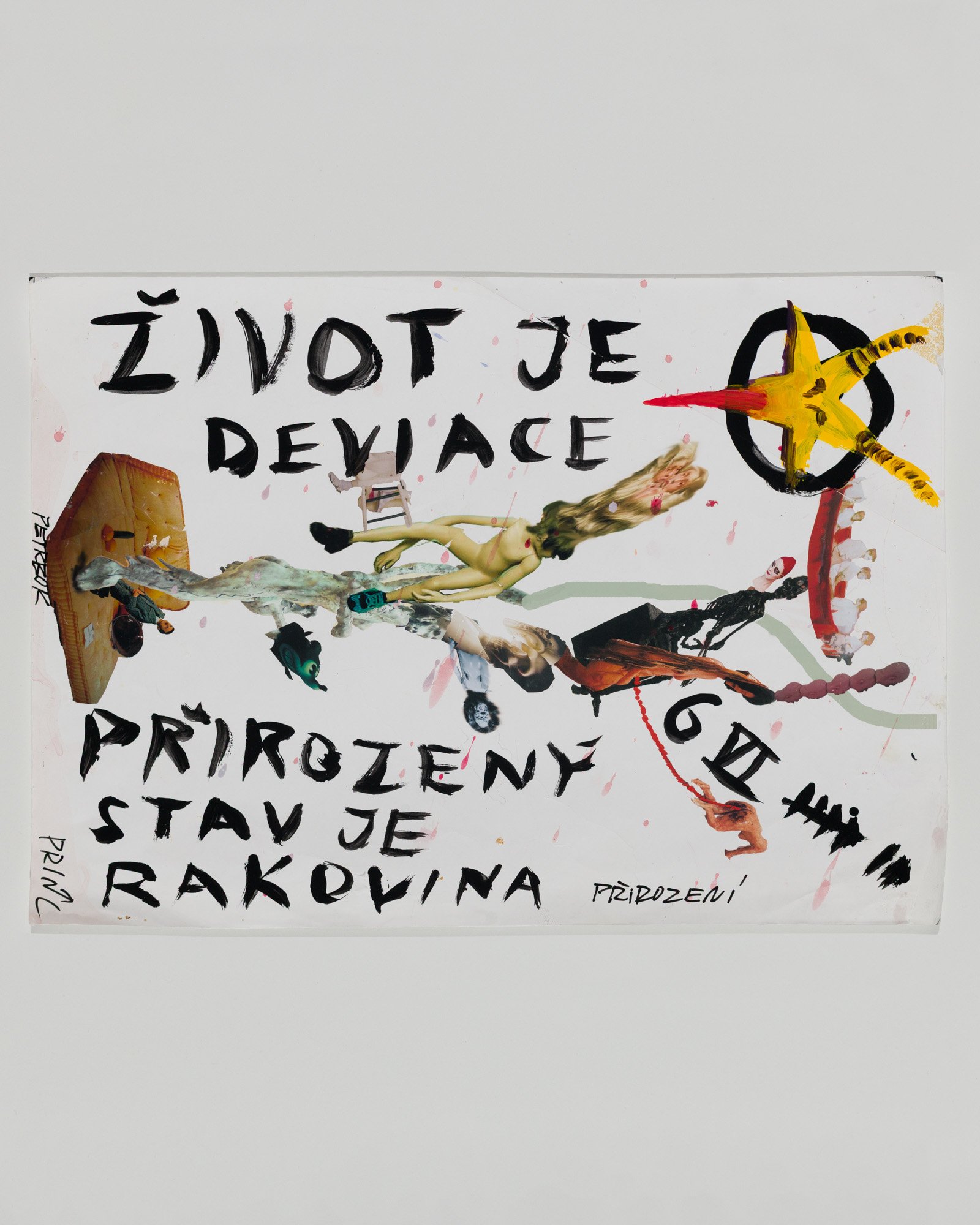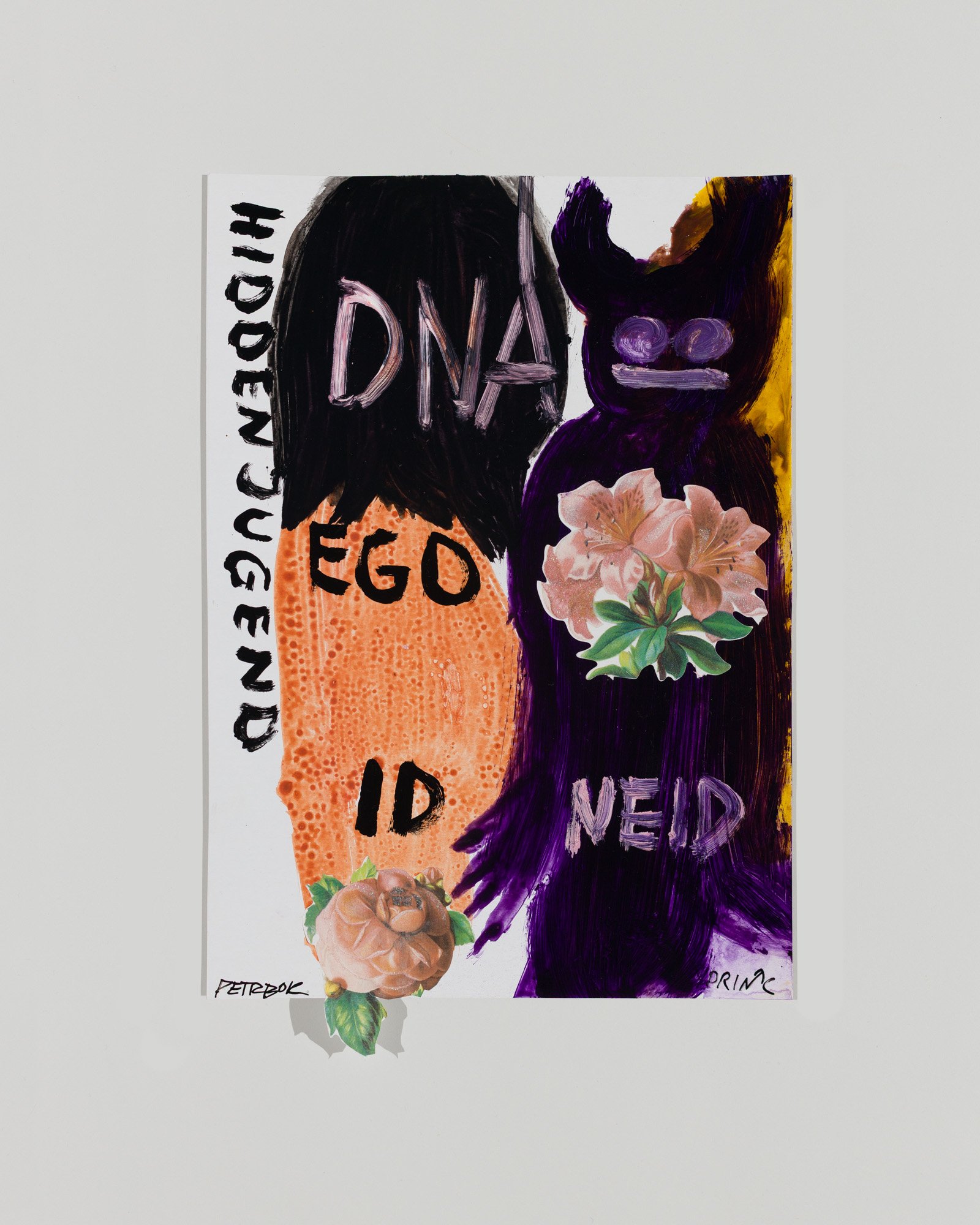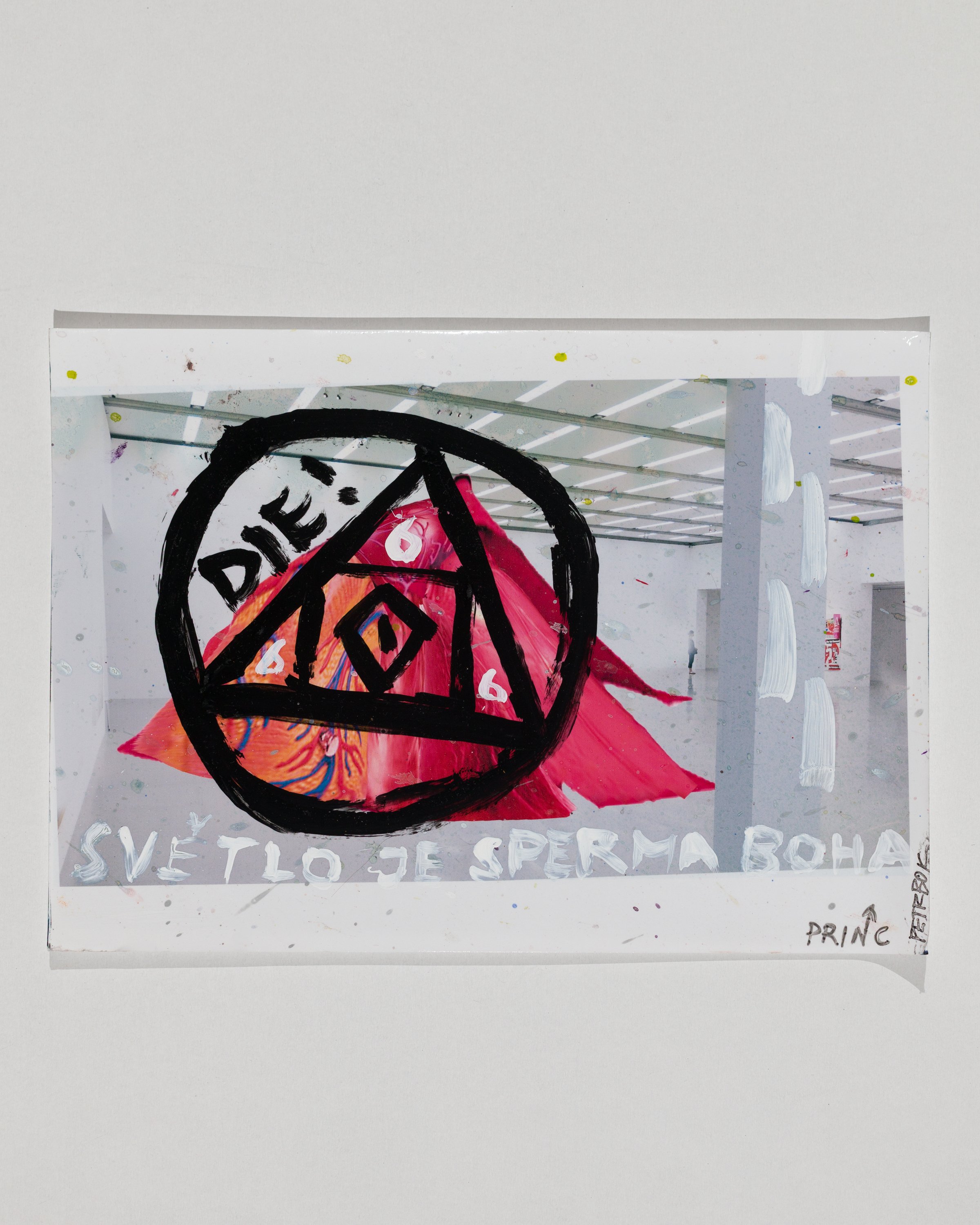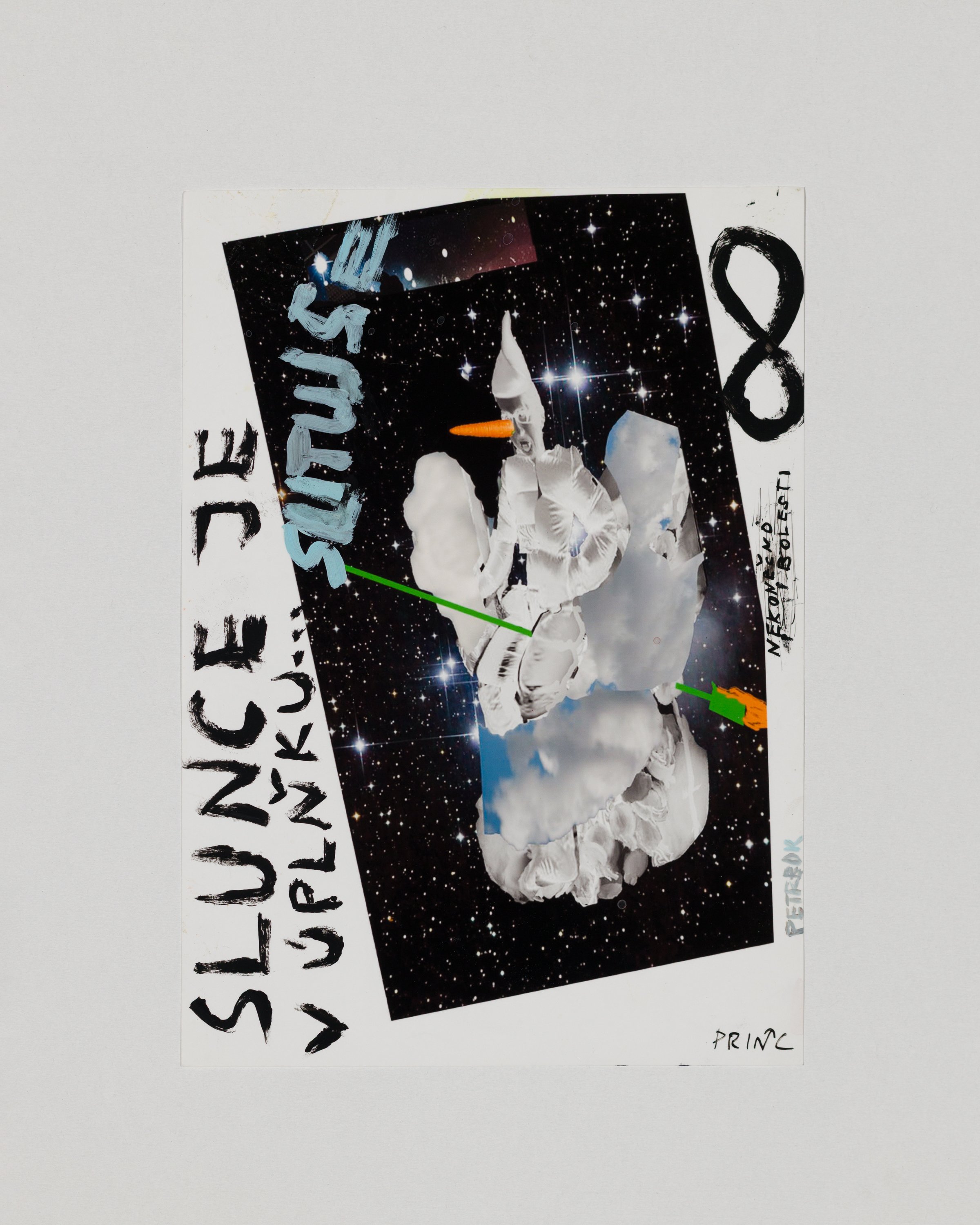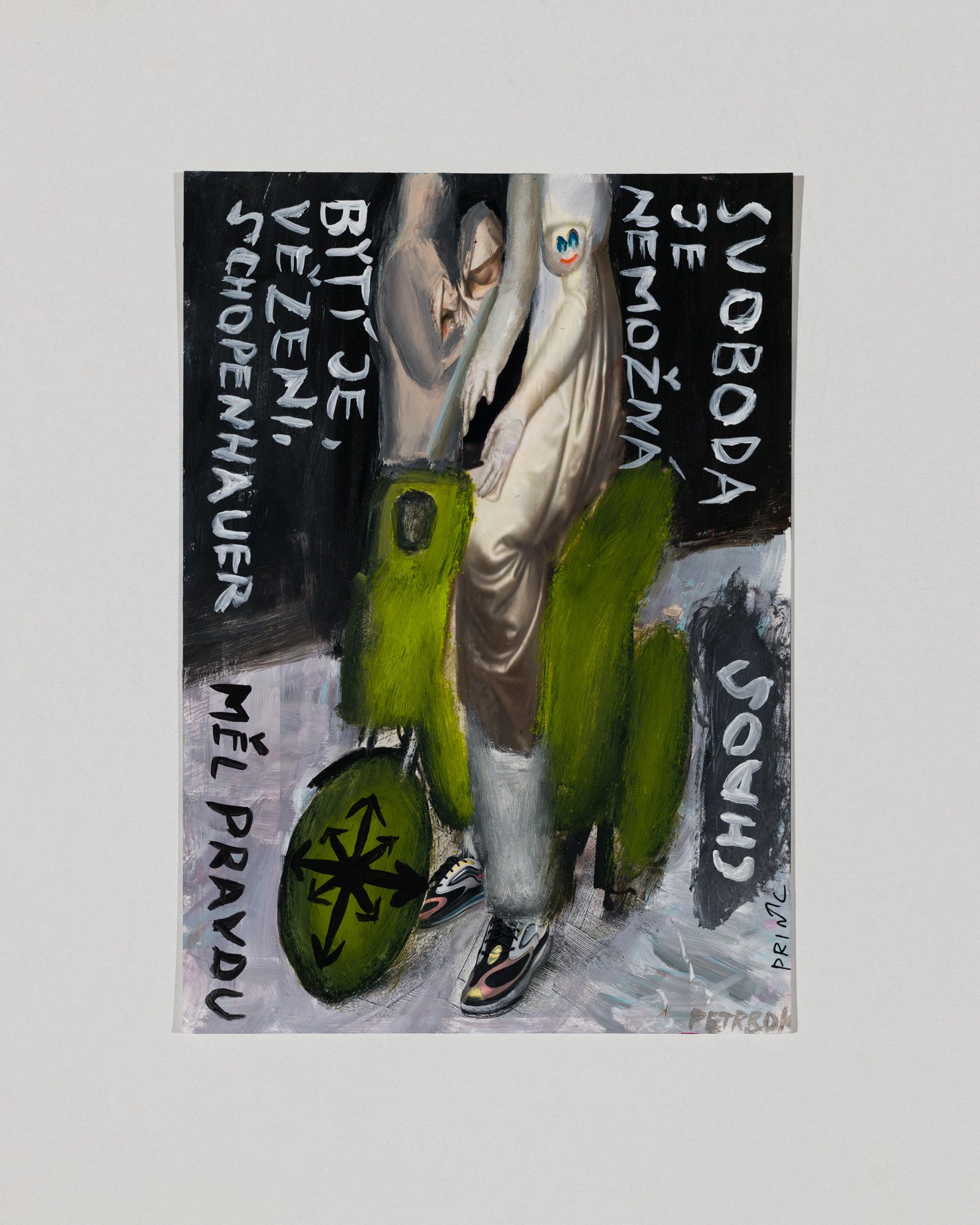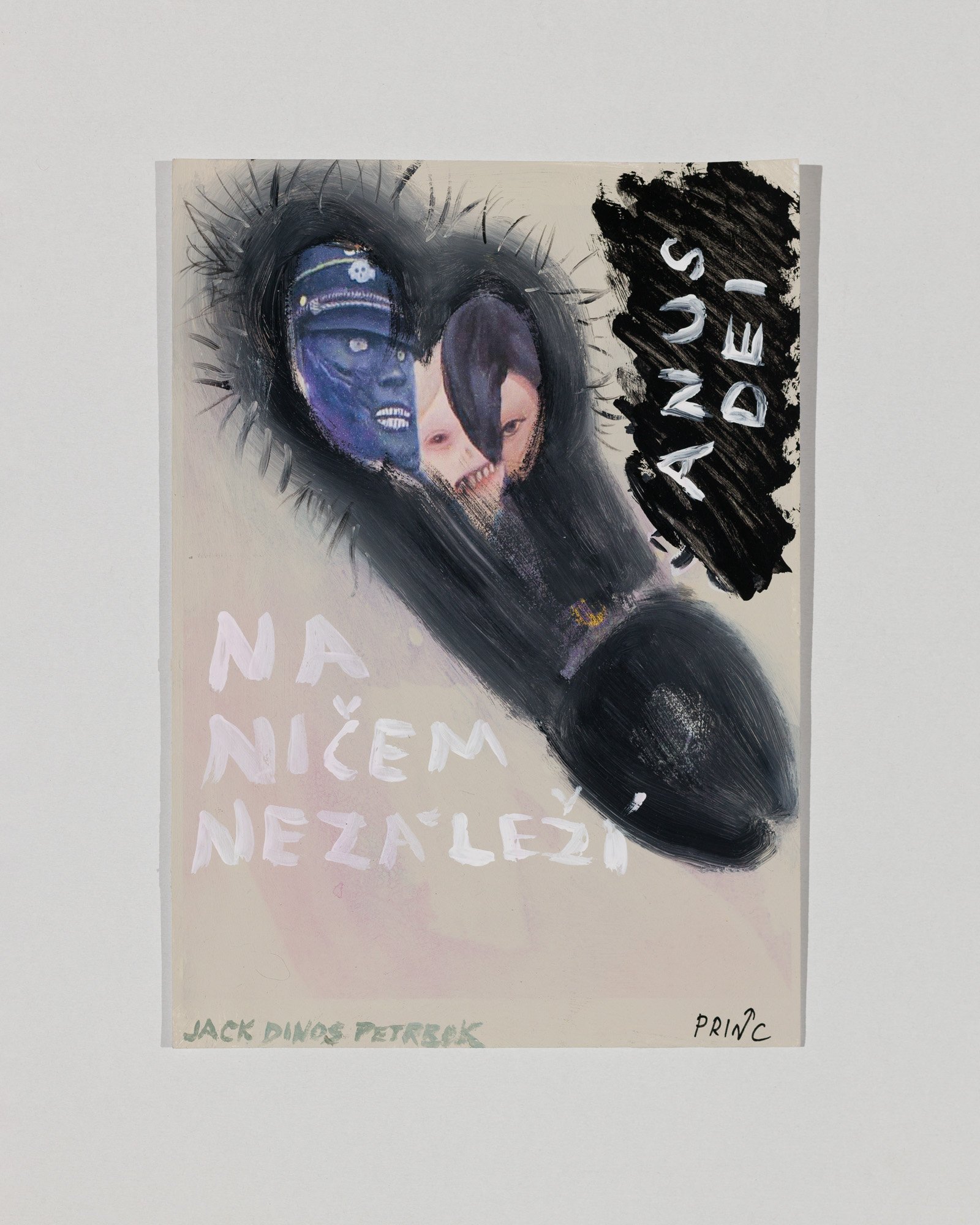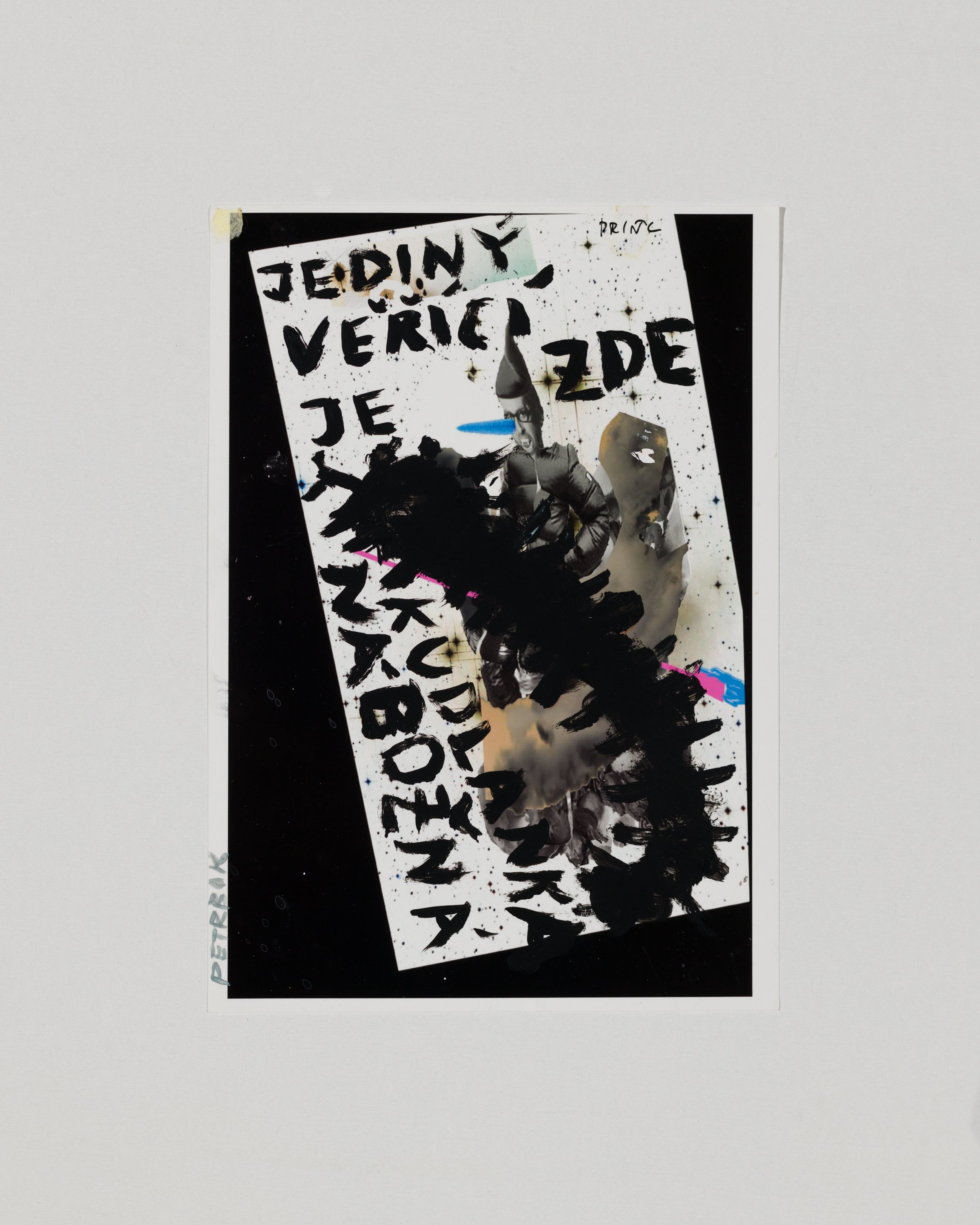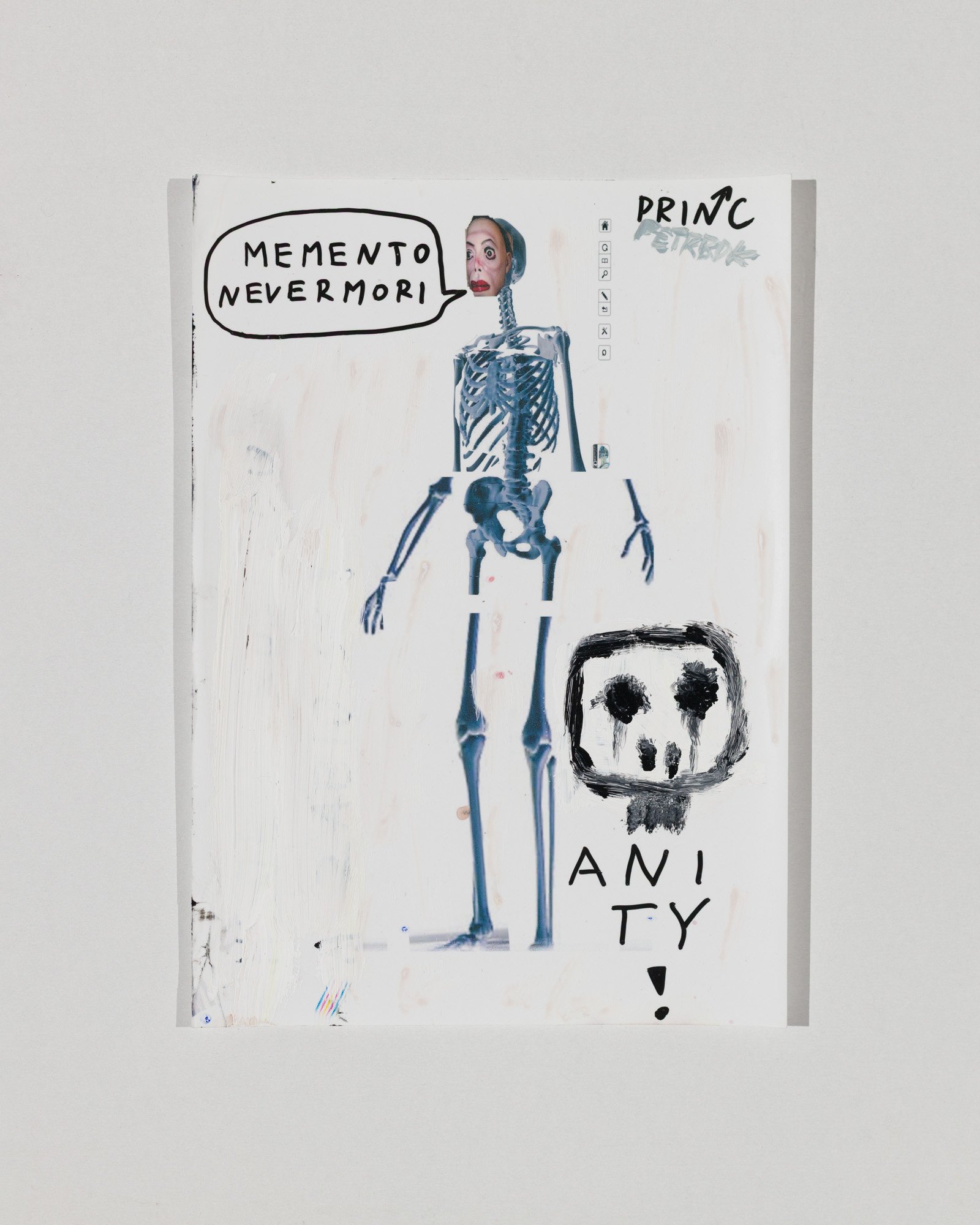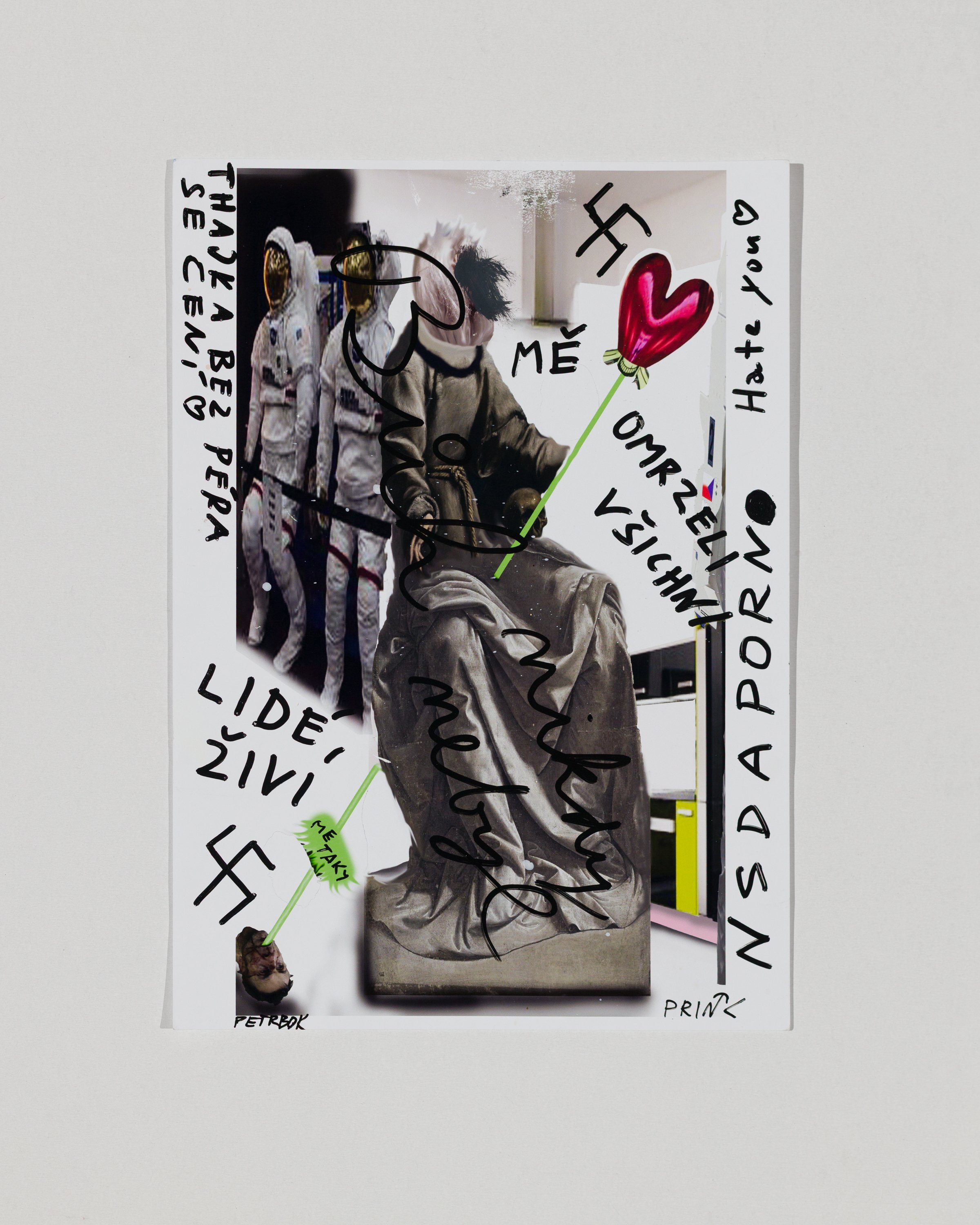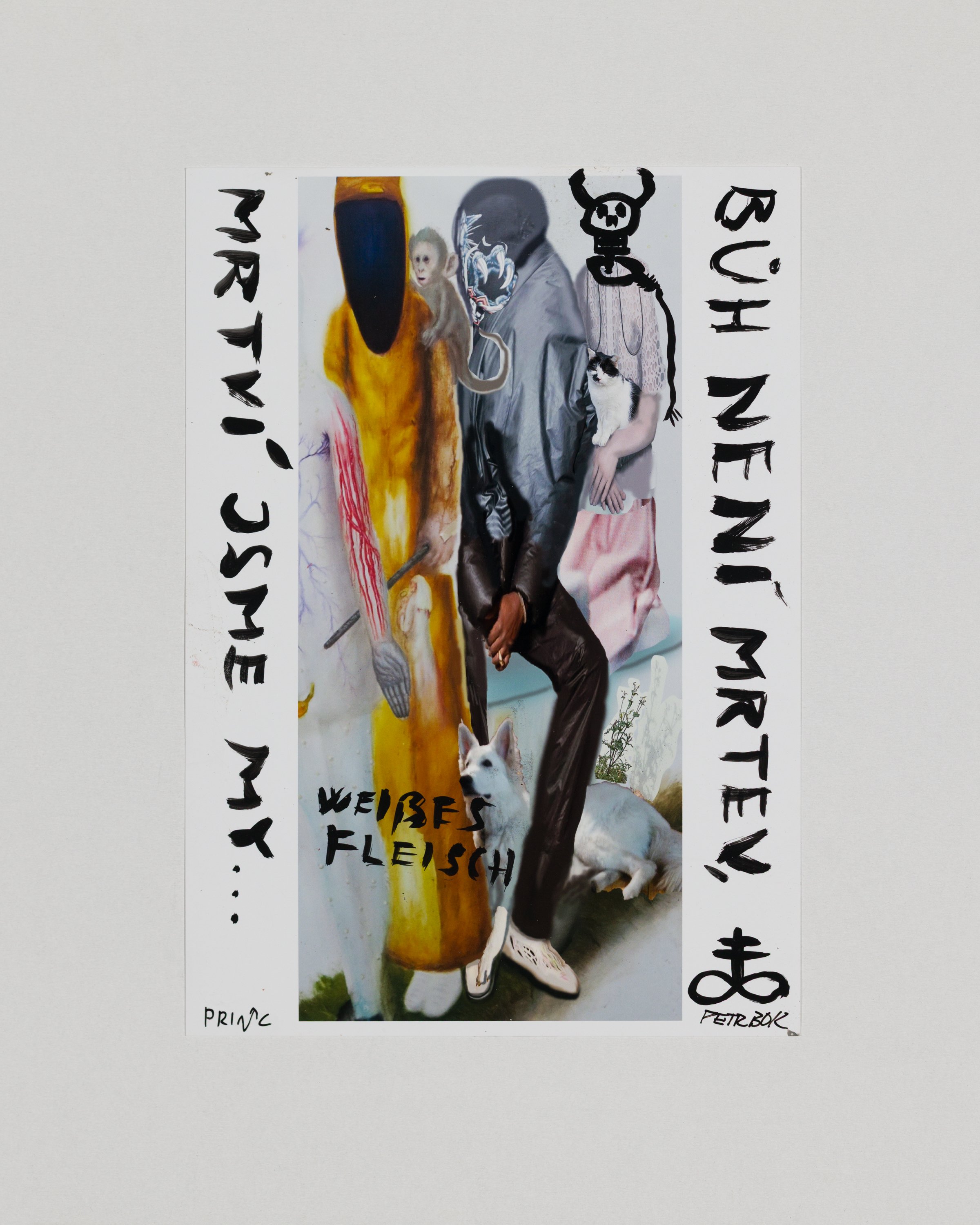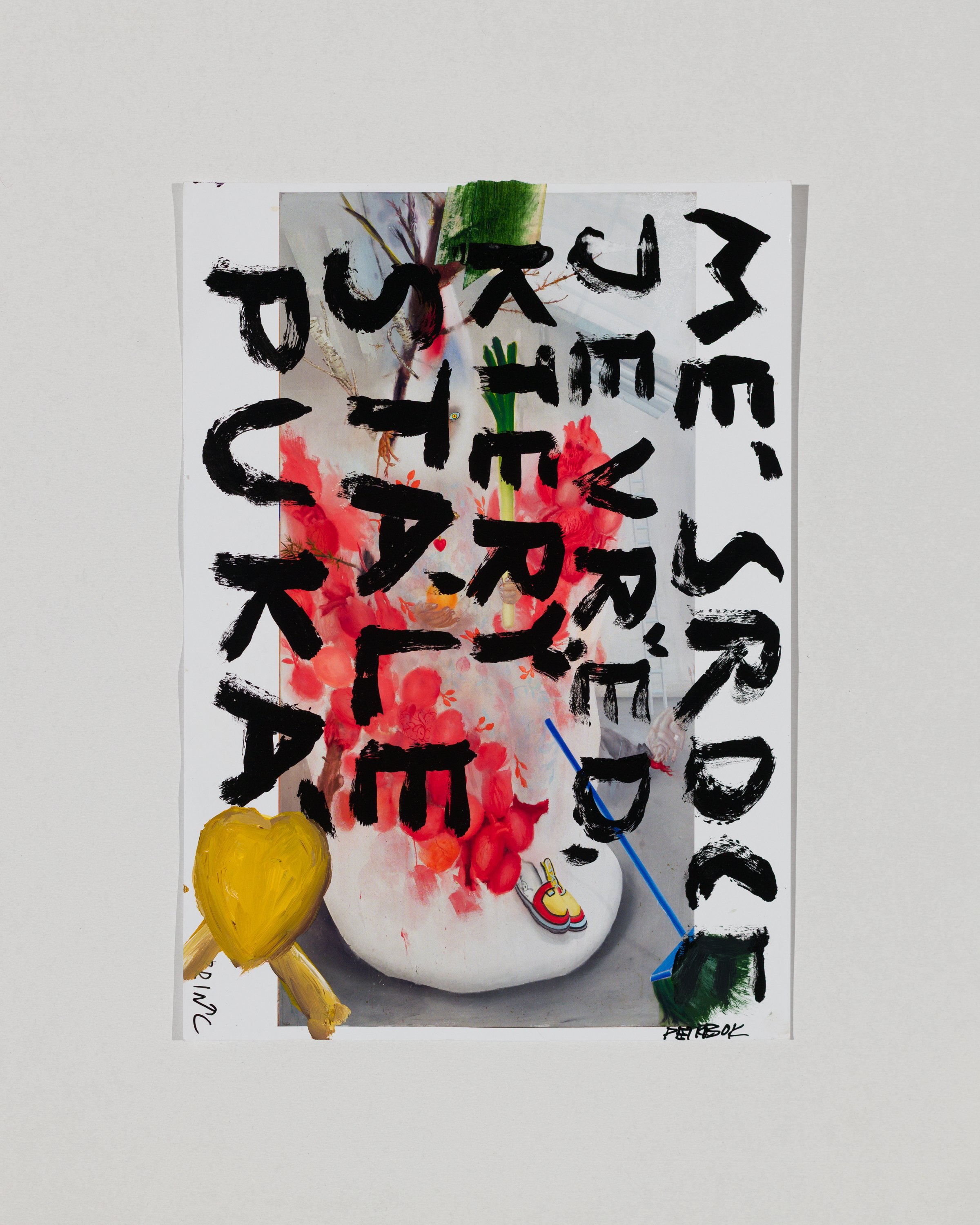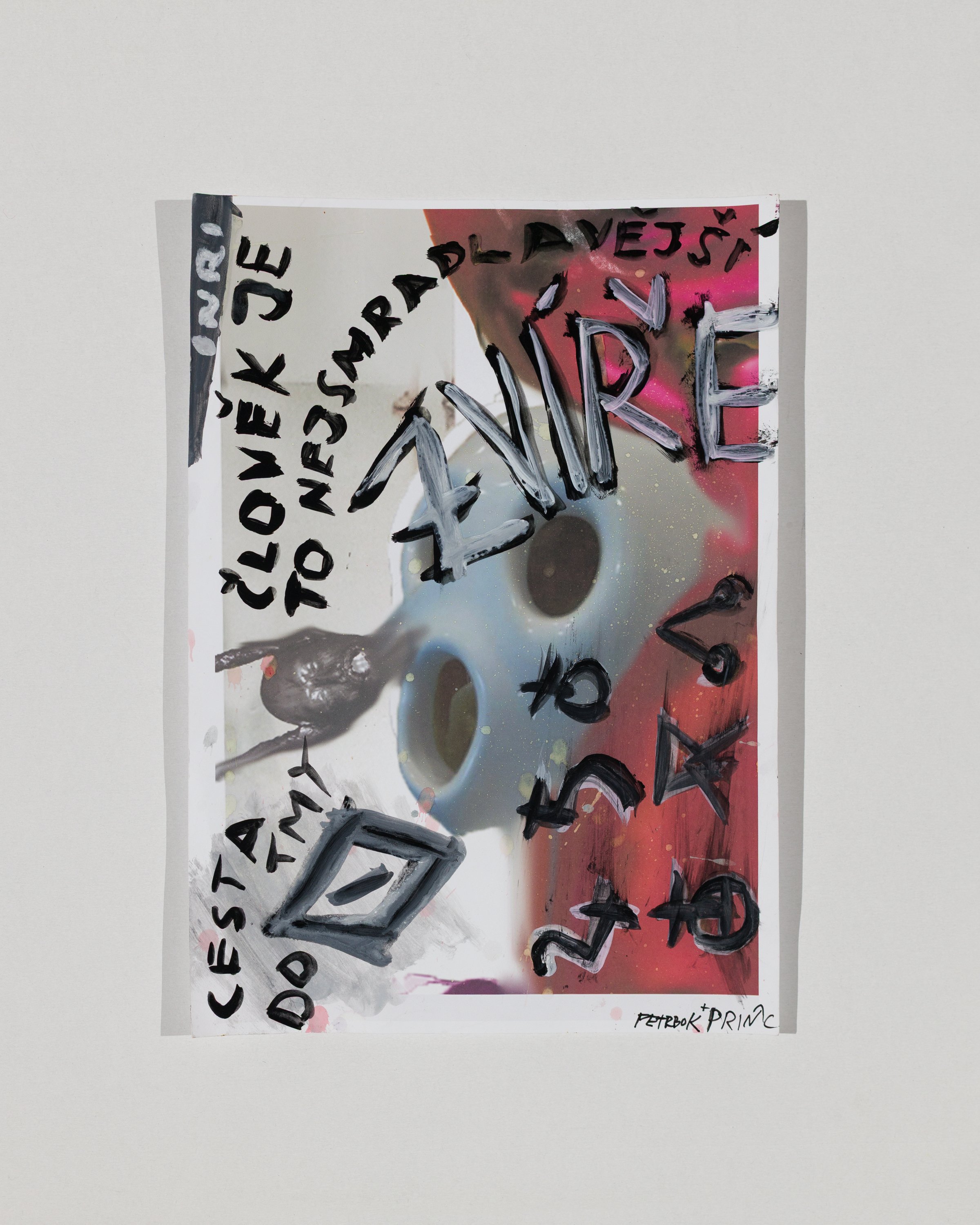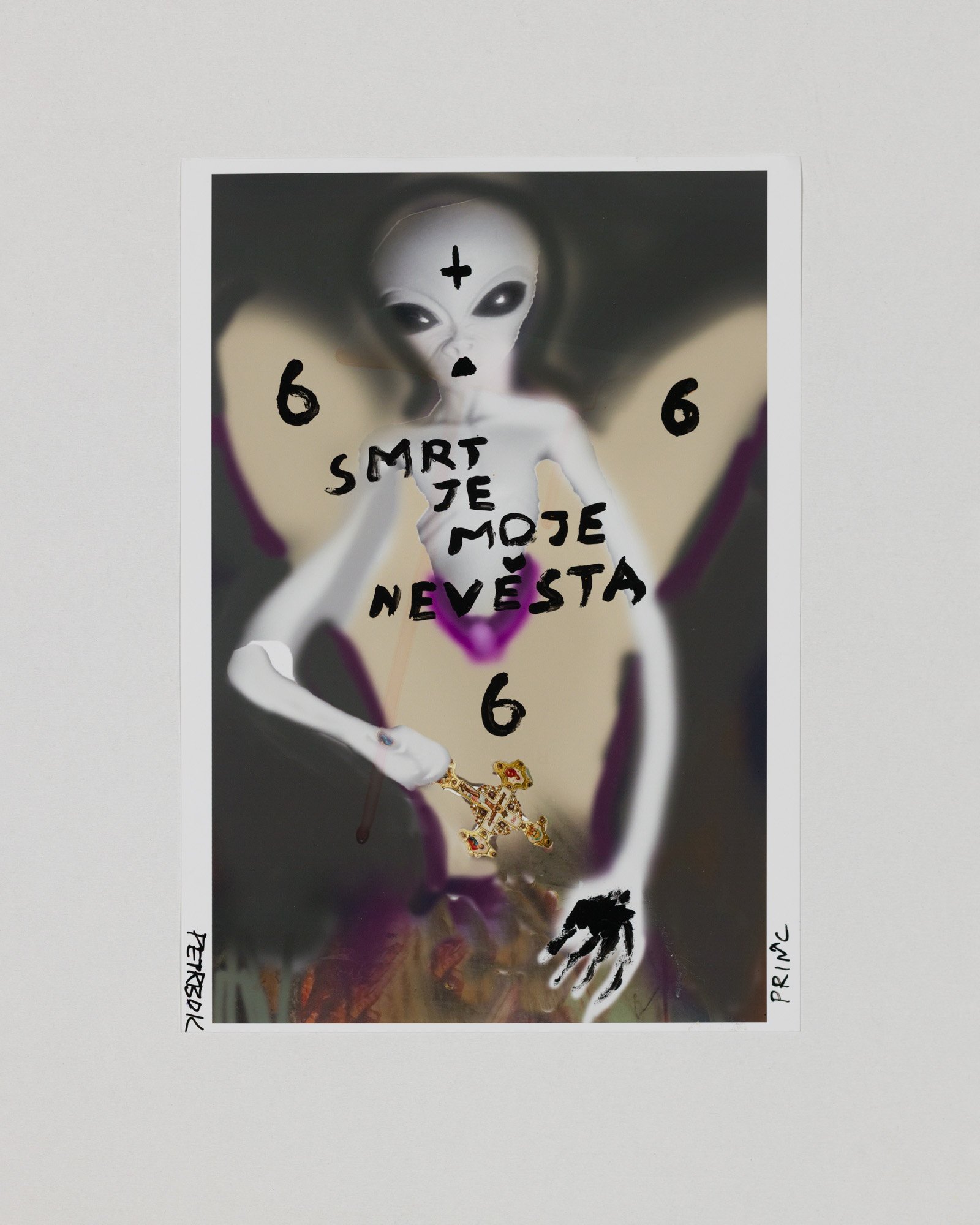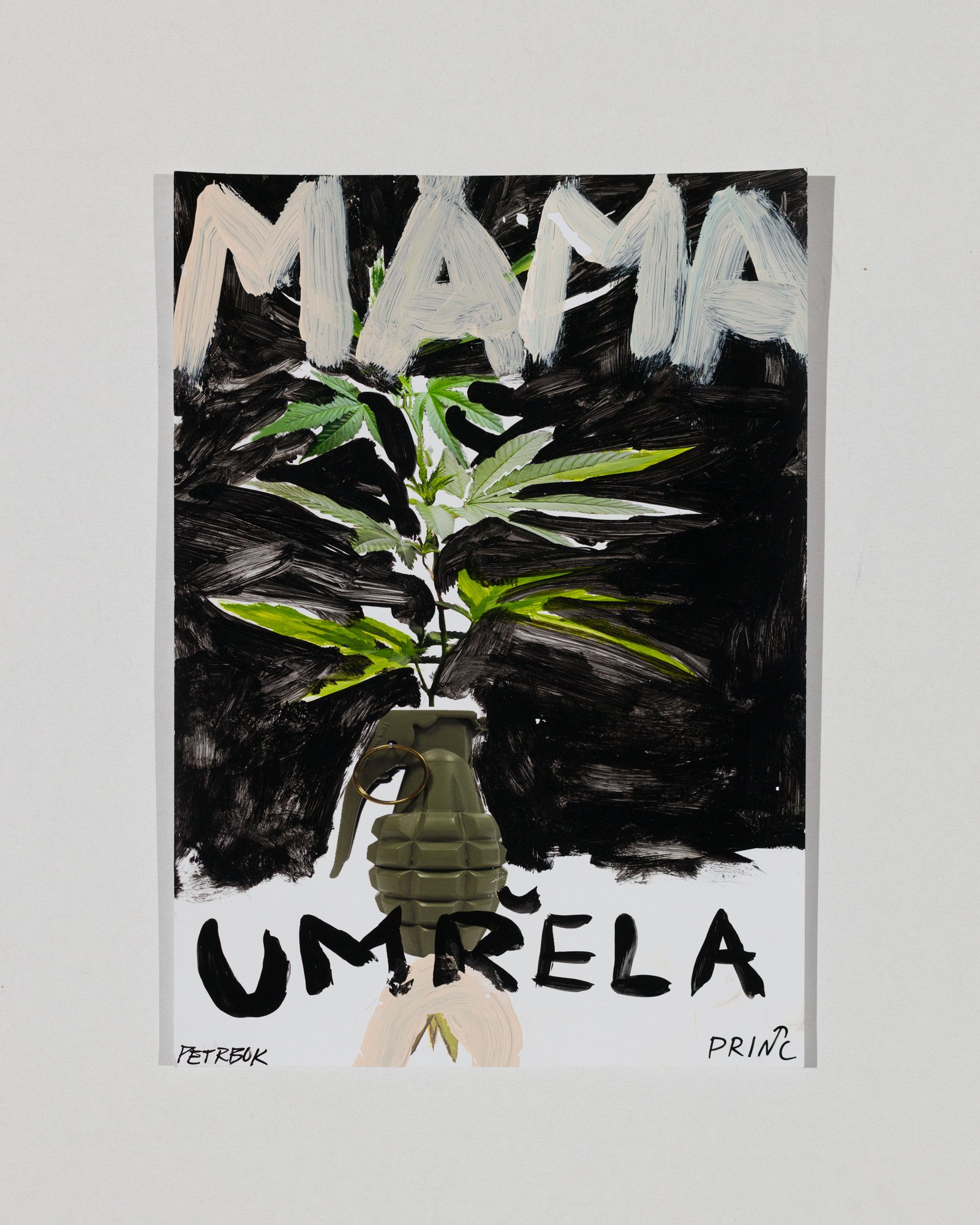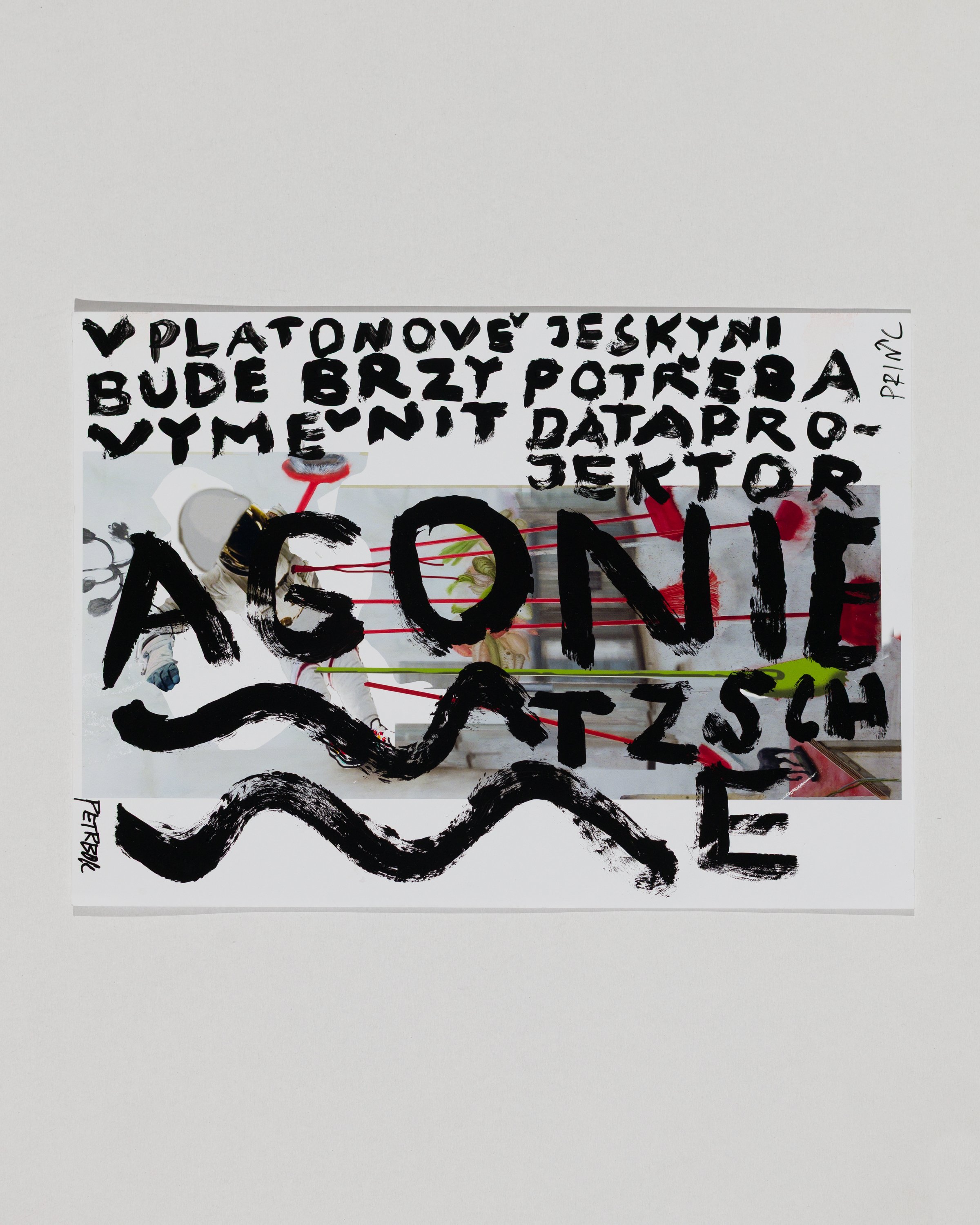TableTalk #3: On Intuition in Creation, Inspirational Wandering, Pessimistic Metaphysics, and the Theory of Everything
On August 28, the third edition of TableTalk took place, featuring guests Karolína Netolická and Jiří Petrbok. This new discussion format blends an intimate artist interview, the atmosphere of a salon, and a relaxed conversation over a glass of alcohol. In this conversational space, complex ideas and challenging topics are intertwined with openness and warmth, creating a profound connection between the guest and the audience, where words resonate on a deeply human level.
Jiří opened the evening with reflections on the uncertain future of art school graduates and, together with Karolína, explored the relationship between an artwork’s material or medium and its eventual market value. They discussed the art collective Tvrdohlaví, as well as artists Anselm Kiefer, Neo Rauch, and Viktor Pivovarov, along with the broader tradition of Expressionism. Jiří recalled a time of oversaturation with conceptual art and the former “hegemony” of the conservative art historians Ševčík, a married couple who both taught art history. He also shared how he once experimented with abstraction but ultimately burned those works without hesitation.
Karolína spoke about deciding to become a professional artist in her second year of high school, though she had previously planned to study mycology and often redrew detailed illustrations of fungi, plants, and bones. She is fascinated by the structure of lichens and the phenomenon of waves, which also dominate the field of physics. Her interests include quantum physics, and she follows the work of Italian scientist Carlo Rovelli and Czech theoretical physicist Petr Kulhánek. Jiří shared his own fascination with Stephen Hawking’s ideas and black hole theory. Both artists also find inspiration in Polish sociologist Zygmunt Bauman and his reflections on postmodern consumerism.
The discussion touched on numerous themes from psychology and philosophy. Jiří spoke about his experiences with experimental psychology, including participating in holotropic breathing workshops led by Stanislav Grof and undergoing a shamanic ayahuasca ritual. Karolína reflected on the philosophy of Petr Rezek and Anna Hogenová’s phenomenological work Žít z vlastního pramene (Living from One’s Own Source), which examines authenticity of being and the search for inner essence. Jiří referenced Byung-Chul Han’s Burnout Society, which explores pathological information overload and alienation, leading to feelings of emptiness and isolation.
Karolína then described the evolution of her artistic process: while she previously drew heavily on literary inspiration, she now works more from her own visions, painting with greater intuition and intimacy. She no longer rigidly follows a predetermined plan but paints more spontaneously, sometimes altering the composition even mid-process. Her paintings focus on reinterpreting myths, from Christian biblical stories to ancient legends, and often feature animal allegories. Jiří, by contrast, frequently uses parables embodied in human figures and anthropomorphic monsters.
Jiří raised the topic of primal instincts in opposition to rationality, likening postmodernism to a “sliced cake.” Karolína introduced the idea of “market-ism” as the way artists adapt their styles to current tastes. Other themes included the inverse relationship between aesthetics and perfectionism (what is perfect is not always beautiful), the harmful influence of AI on society’s decline, humanity’s susceptibility to manipulation, Adornian critique, and nature as a lost home that humanity has arrogantly rejected and disrupted.
Toward the end of the evening, Jiří reminisced about his prematurely ended sports career: as a youth he played left-back for Beroun’s regional football team but ultimately had to choose between becoming an athlete or an artist, opting for the latter. He also praised Karolína’s thesis defense, which, alongside Marcela Putnová’s, he considered the best in their year. Karolína concluded by reflecting on Anna Hogenová’s philosophy and the importance of rituals and traditions, whose symbolism she continues to explore and transform in her paintings.
Why come next time?
TableTalk is not an artist talk. It’s not an opening. It’s not a podcast. It’s all of these — an inspiring gathering in an underground club where artists talk about both intimate and socially resonant themes. At the next TableTalk, you might be sitting next to someone whose artwork is hanging on the wall beside you.


